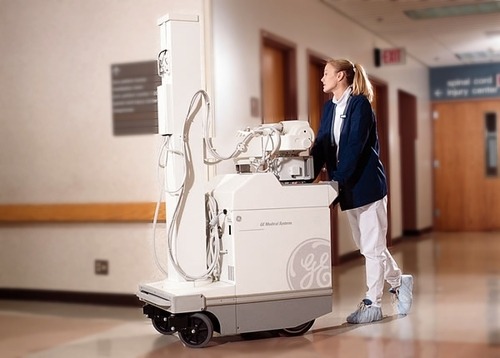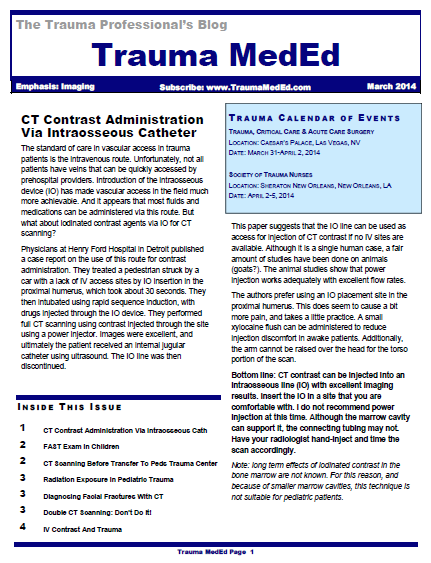This has probably happened to you. You get a consult to see a trauma patient in your ED. As you walk into the room, you practically run into the massive portable x-ray machine sitting next to the patient. They’ve had some pretty significant blunt force to their leg, and the imaging has been ordered to rule out a fracture.

Sure, it’s convenient. The patient can stay right in the room. And it might be a little faster, especially if the regular x-ray department is a bit backed up. But let’s look at the my favorite indicator again, the juice to squeeze ratio.
The control of the x-ray beam is not as good as with the fixed equipment. There just isn’t the same range of control available in the portable machines, which becomes important when nonstandard imaging and techniques are needed (think morbidly obese patient).
Placement of the x-ray plate can also be sub-optimal. This is especially true when biplanar images (i.e. AP and lateral) are requested, which is very common for fracture diagnosis.
There may be additional exposure to radiation, especially to healthcare personnel or other patients. Someone has to hold that plate for the lateral image. Or other patients may be nearby, and shielding is not the same as in the rooms in the radiology department.
Bottom line: Sure, getting a portable x-ray may be the easy way to go. But only use if for studies that you absolutely must get quickly, and in which fine detail is not important. The standard chest and/or pelvis x-rays during trauma resuscitations fall into this category. But if you want the best quality imaging for diagnosis, and want to avoid repeat imaging, send your patient to the department to get some real images. Don’t settle for crappy ones!
Related posts:



